Stratigraphy of layers of painting wall polychromes
Anna Żurek
Physical and chemical tests using the SEM method together with the development
Magdalena Pańczyk, Leszek Giro
Samples for testing
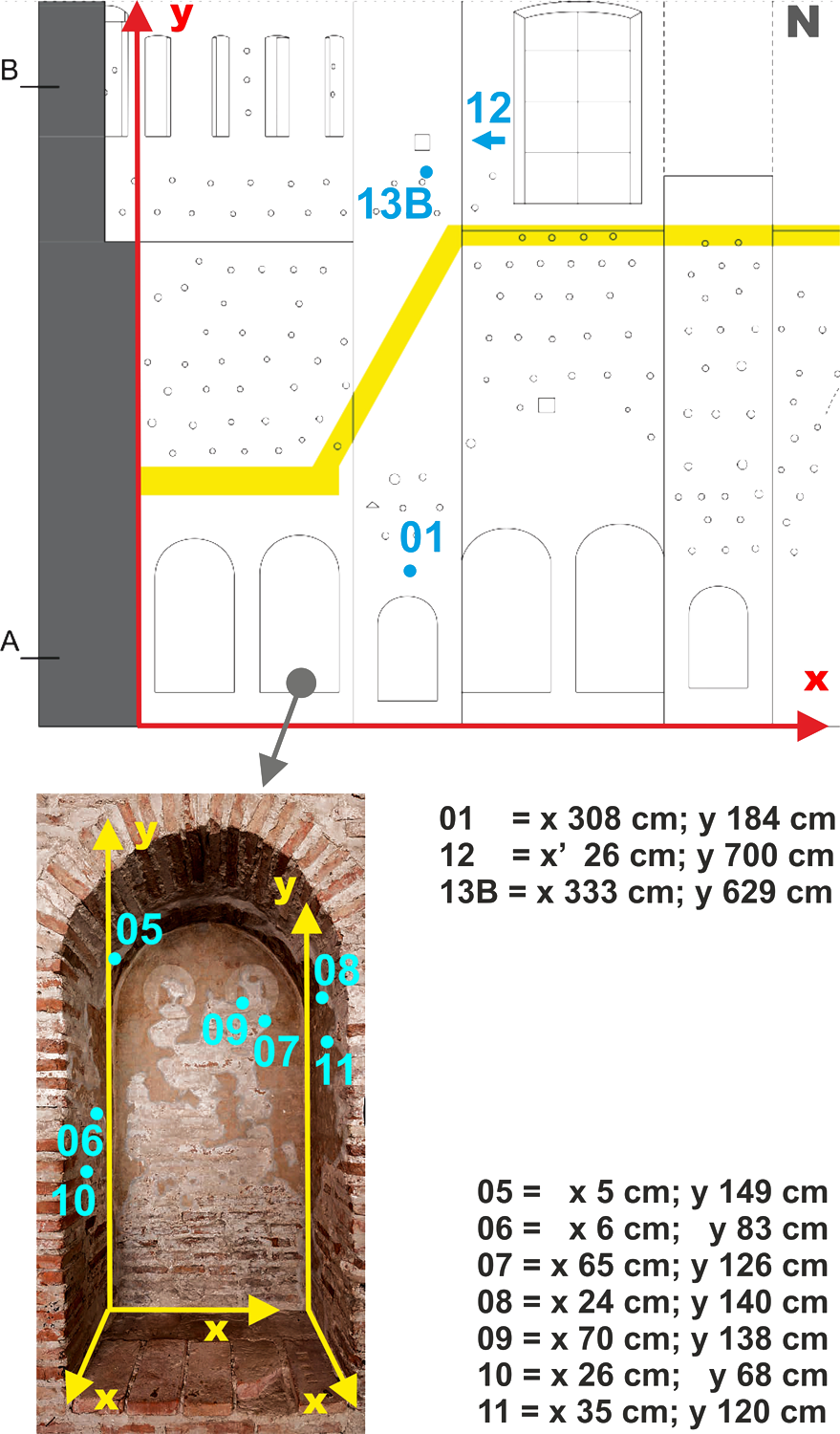
The chart indicates the places of obtaining samples for preparation of preparations; size 4 - 8 mm2 (paint layer, painting layer with mortar), 10 - 25 mm2 (mortar with soggy, mortar with monochrome polychrome).
01 - mortar and beat.
05 - mortar and painting layer.
06 - mortar and painting layer.
07 - mortar and painting layer of figural polychrome.
08 - mortar and painting layer of figural polychrome.
09 - mortar and painting layer of figural polychrome.
10 - mortar (technical coating).
11 - mortar and painting layer.
12 - mortar with monochromatic polychrome.
13B - mortar with monochromatic polychrome.
01. mortar, blanch

Layer arrangement from the top:
1. white - thickness approx. 80 μm;
2. light yellow – thickness approx. 75 μm;
3. cream – thickness approx. 200 μm;
4. dark cream with a granular filler - mortar.

the red frame is marked with an enlarged fragment in the picture below
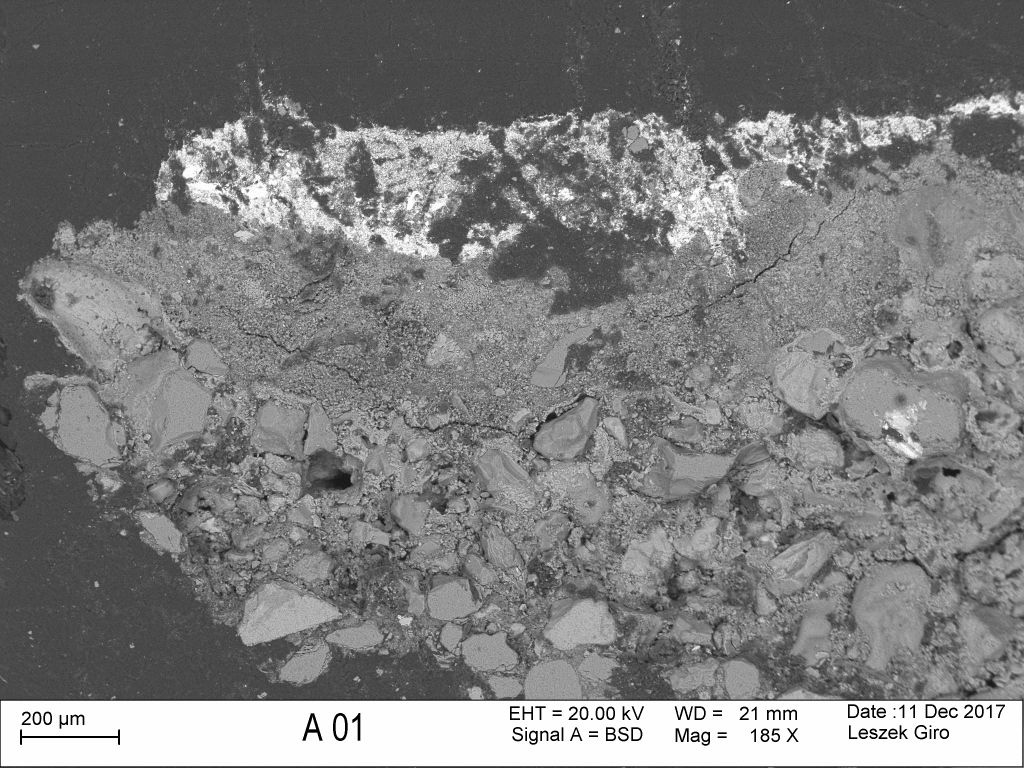
SEM-EDX analysis confirms the presence of four painting values. The white and light yellow layer contains mainly a mixture of zinc white and barite white, occurring in different proportions. In the light yellow layer, the presence of silicates and carbonates was additionally found. The third layer, cream, is a mortar, composed of calcium carbonate with an admixture of dolomite and small quartz admixtures.
05. mortar and painting layer (ocher?)

Red homogeneous layer with a layer of mortar (visible grains of the filler).

the red frame is marked with an enlarged fragment in the picture below
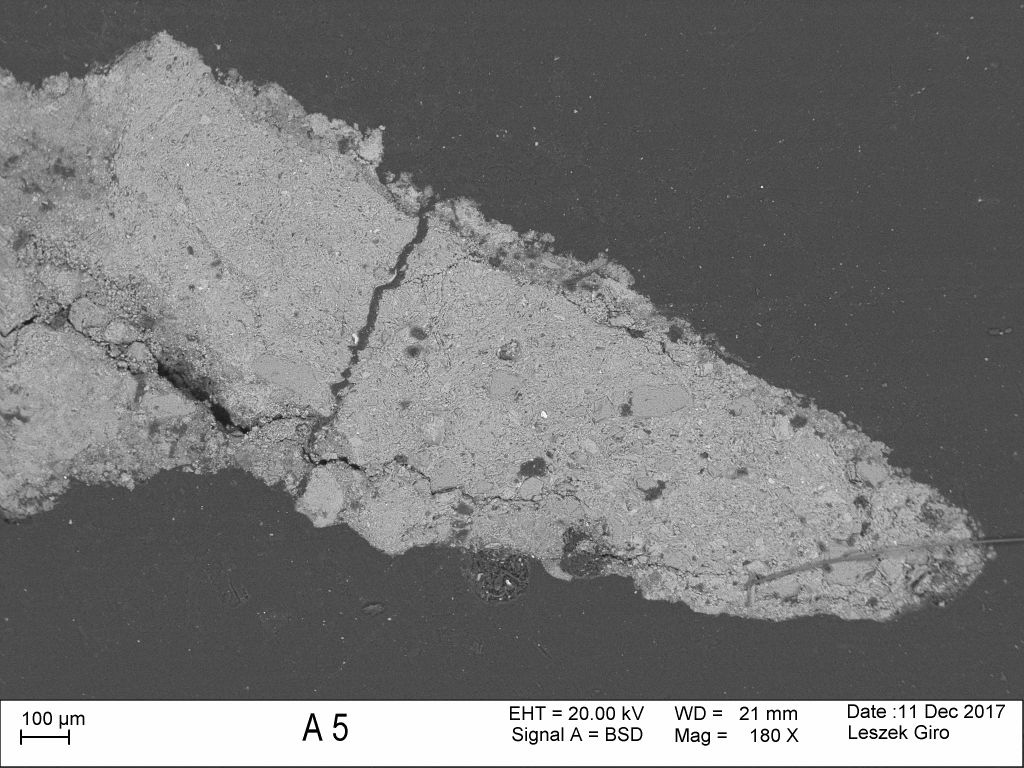
The red layer located somewhat within the mortar contains ocher. The presence of iron compounds, quartz and feldspar (potassium and plagioclase) was found.
06. mortar and painting layer (ornamental painting)

Layer arrangement from the top:
1. thin dark layer of dirt
2. white - thickness approx. 100 μm;
3. white with transparent crystals and red seeds - mortar.

the red frame is marked with an enlarged fragment in the picture below
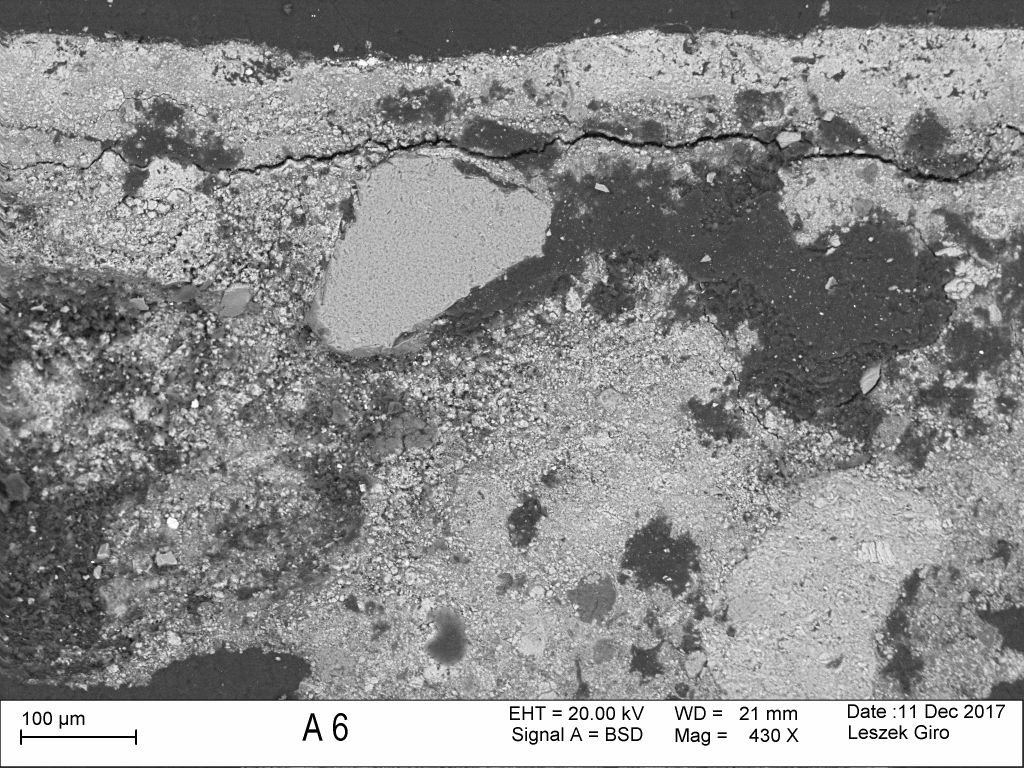
The second, white layer is mortar. Chemical analysis in the micro-area showed the presence of calcite with a small admixture of dolomite or a high-calcite calcite. Within the white layer there are single ocher grains.
07. painting layer (from a figural painting!)

Homogeneous red layer, Large, sharp-edged brown-brown crystals are visible on the photo of the smear. It is a pigment of natural origin, most likely a compound of iron (III) - siena.




the red frame is marked with an enlarged fragment in the picture below
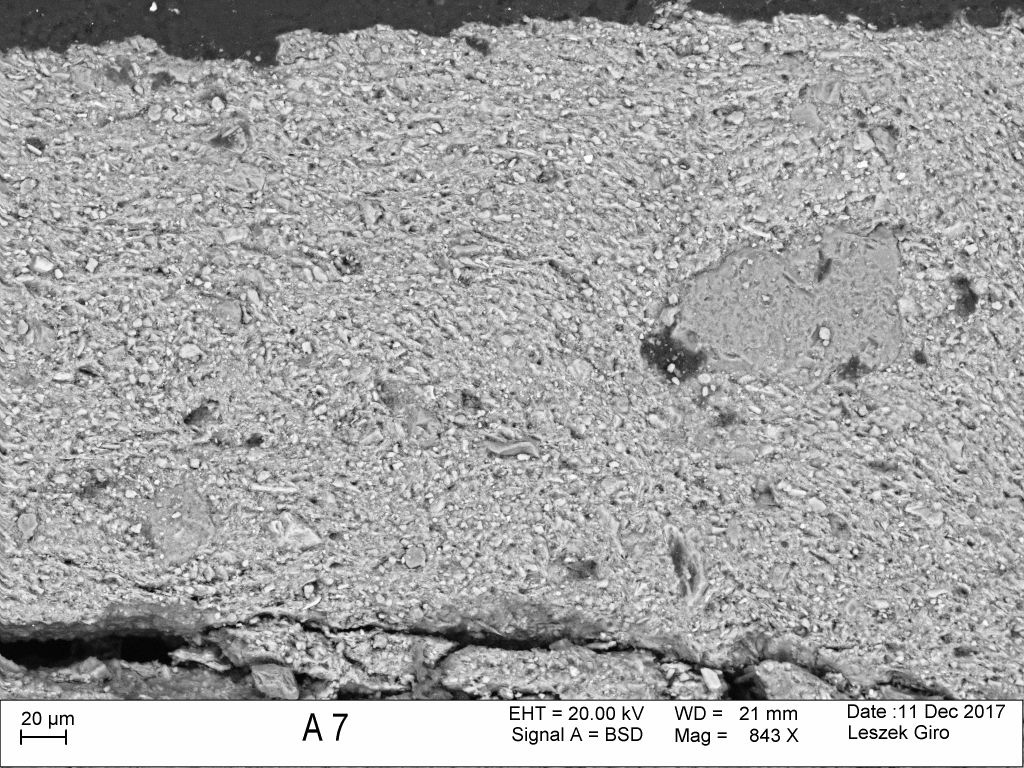
The layer contains a mixture of iron oxides, silicates and aluminosilicates. Clearly visible on BSE images, large (over 100 μm long) sharp crumbs are quartz.
08. mortar and painting layer (from the figural painting, in this chronological layer, the preserved representation gasterk and the votive inscription!)

Layer arrangement from the top:
1. thin red - thickness approx. 10 μm;
2. white with transparent crystals and red seeds - morta.


the red frame is marked with an enlarged fragment in the picture below
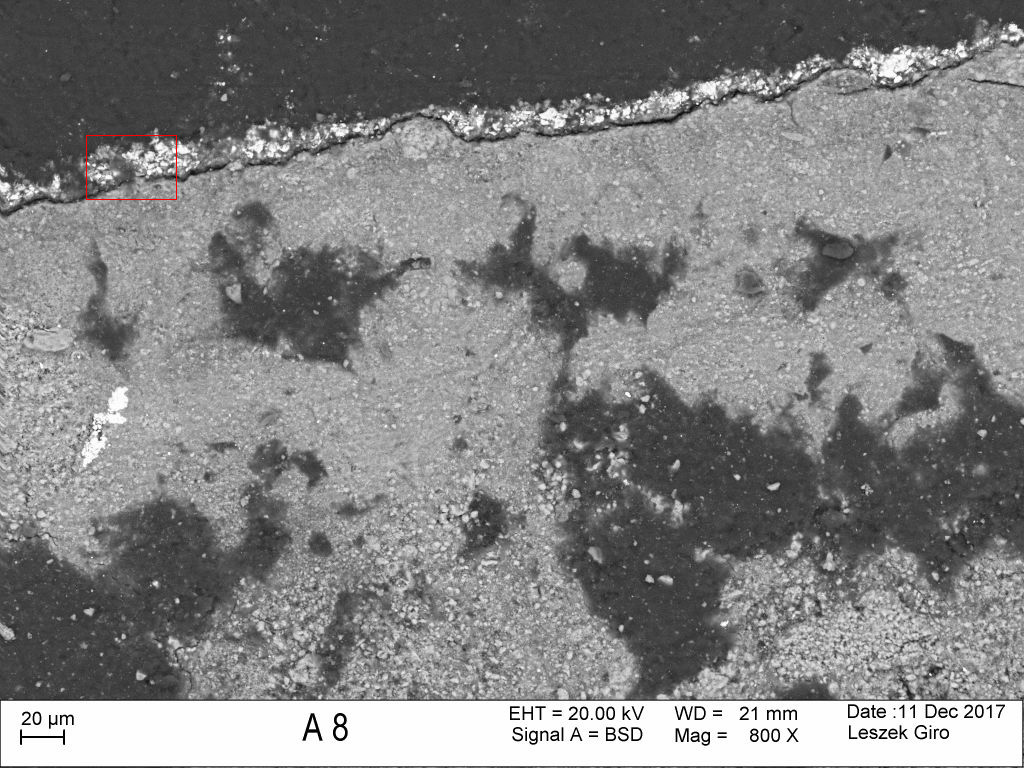
the red frame is marked with an enlarged fragment in the picture below
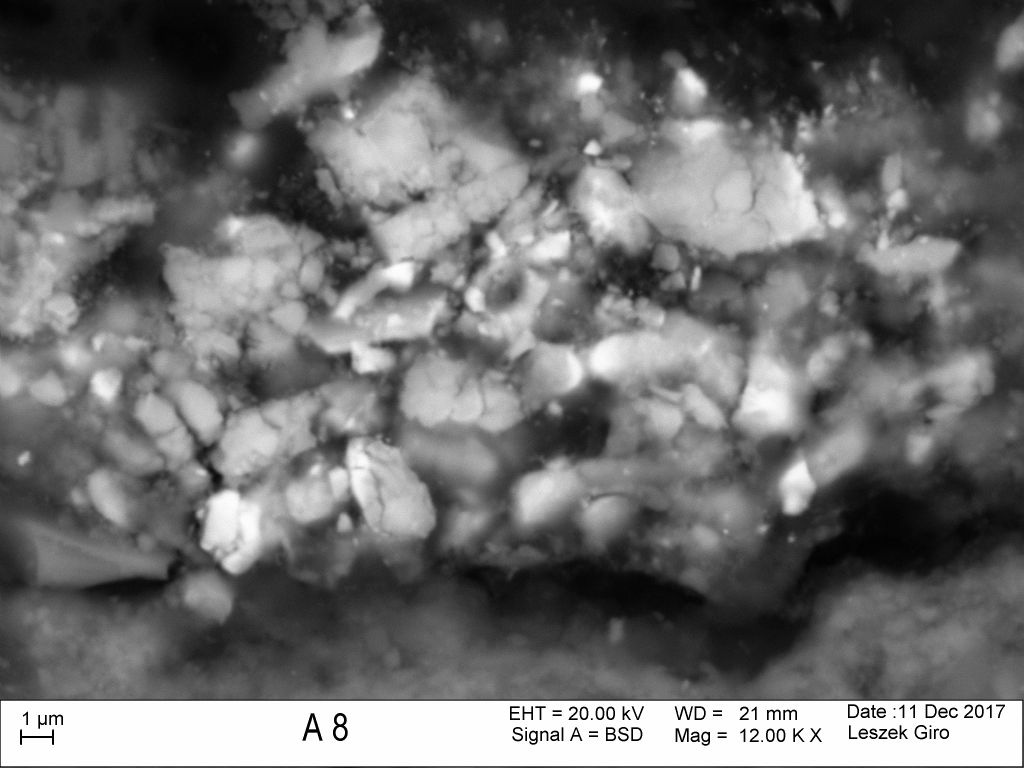
In the first painting layer the presence of iron compounds (ocher) was found, and minia is probably present. Phosphorus is also present ????? The second layer is a calcite mortar.
09. painting layer (from a figural painting!)

Wafers, presumably in two layers.

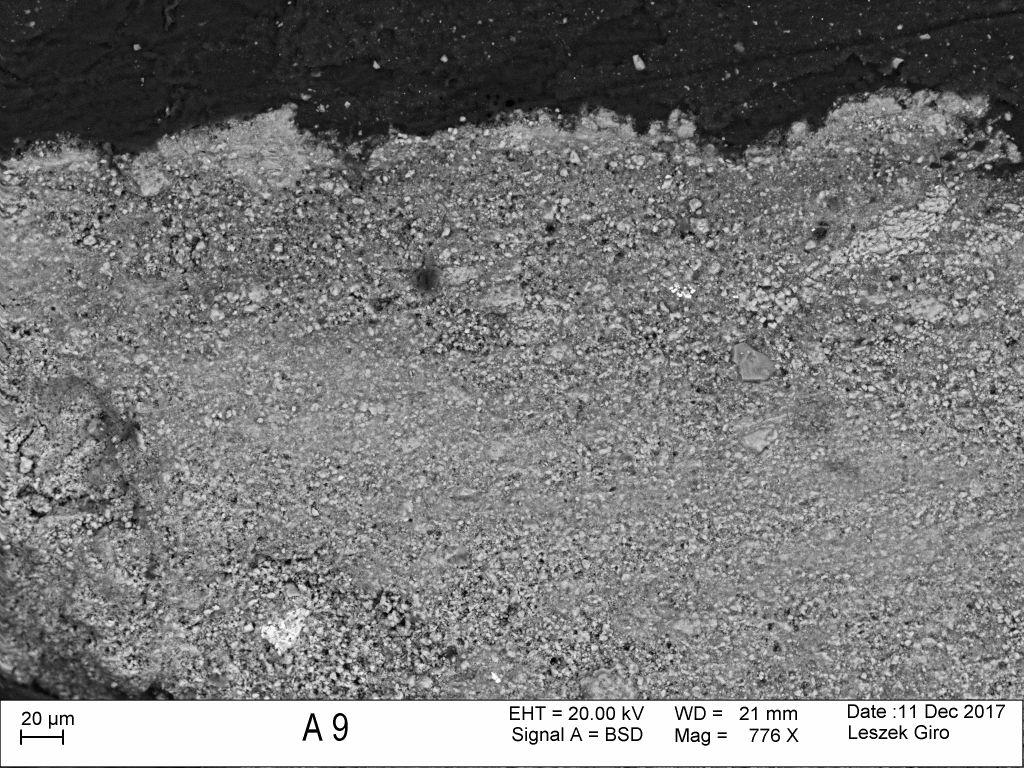
The dominant component of both layers is calcite, subordinate with admixtures of silicates and aluminosilicates.
10. mortar and painting layer

Layer arrangement from the top:
1. white with transparent crystals
2. thin red (fragments)
3. white with transparent crystals and red particles - mortar.


the red frame is marked with an enlarged fragment in the picture below
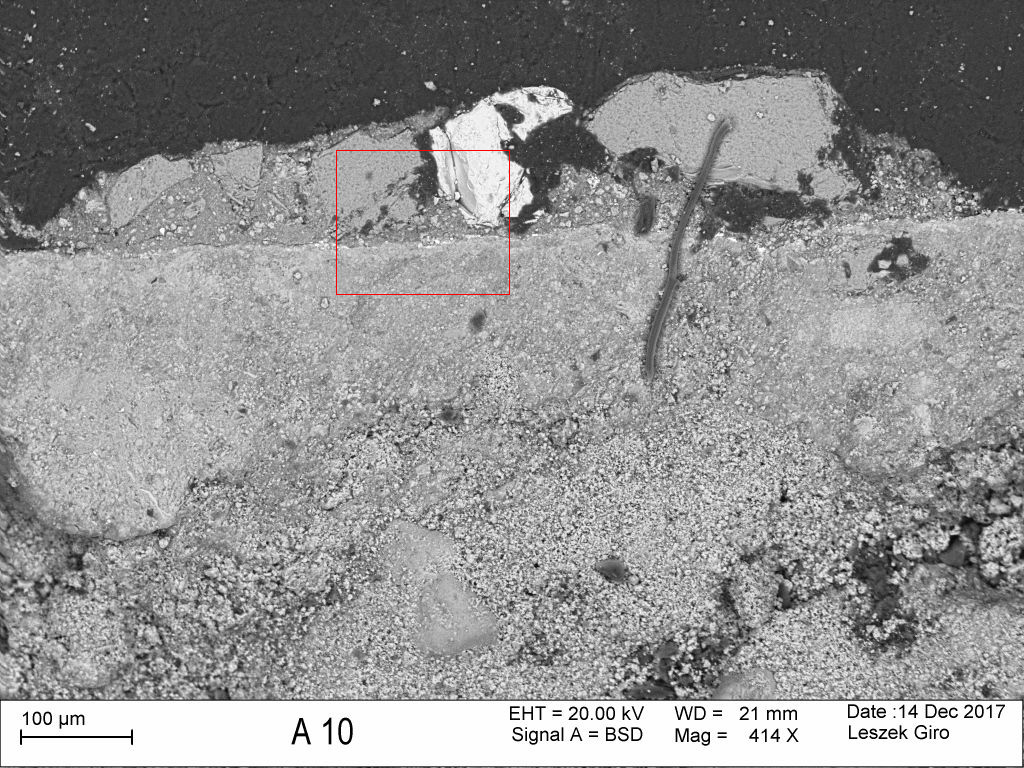
the red frame is marked with an enlarged fragment in the picture below
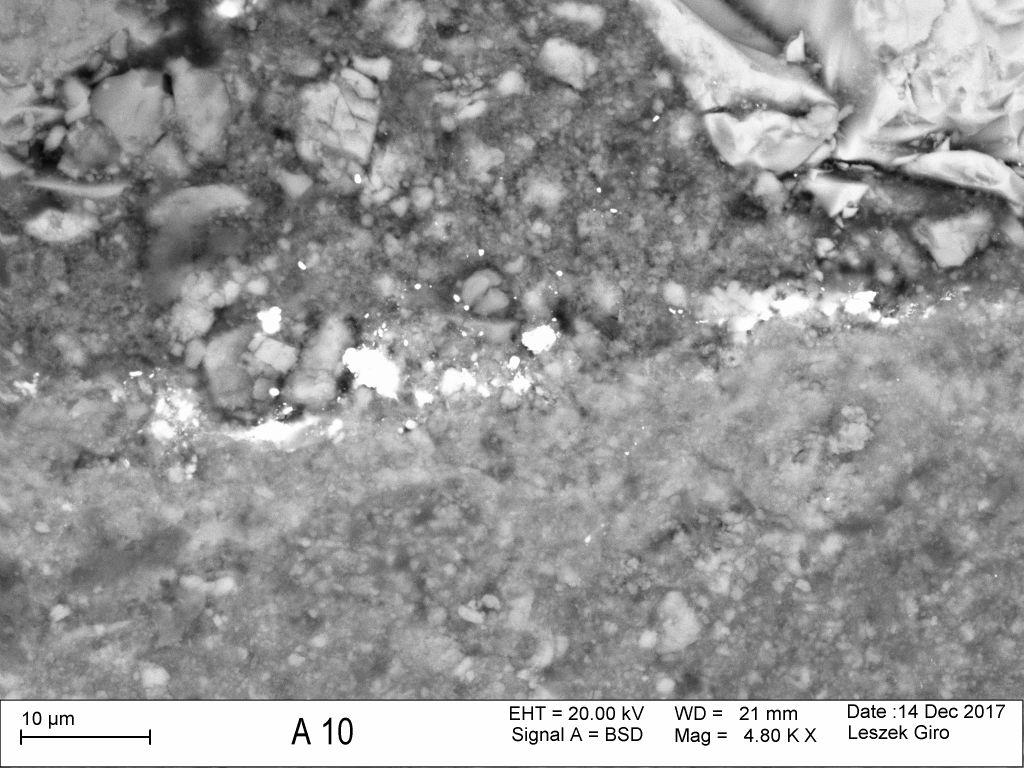
In the first painting layer there are very numerous quartz crystals, ocher grains, and the filling is a mixture of lime mortar, plagioclases and iron oxides. The second layer, occurring only in places, consists mainly of mini. The third layer is a lime mortar.
11. mortar (under a layer with polychrome and a poke - probably the original technical markup)

White mortar with red, white and translucent clusters.

A lime mortar containing numerous crumbs of calcite, quartz, ocher, as well as individual rutile grains.
12. mortar with pigment

A thin red appears on top of the sample
a layer of paint lying on a thick mortar,
from underneath which is also visible
red paint layer


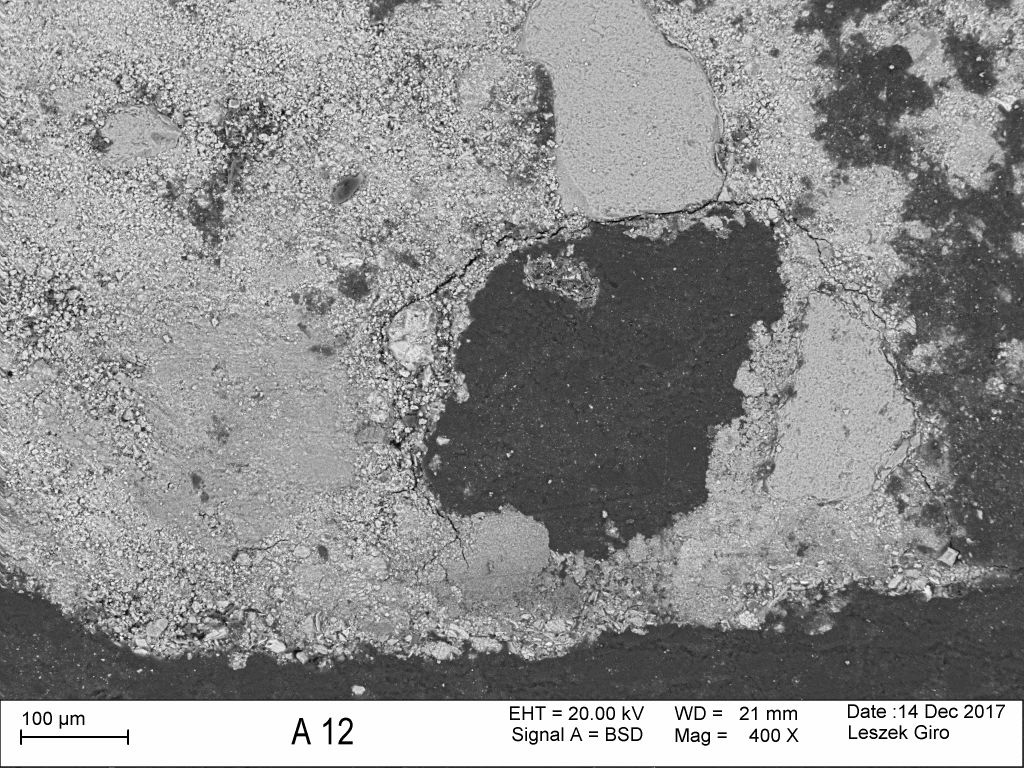
Within the lime mortar there are numerous, very large (over 100 μm in length) grains of quartz. Occasionally, single grains of gypsum are found.
13.B mortar (with pigment?).

Layer arrangement from the top:
1. thin red - thickness approx. 15 μm;
2. white homogeneous – thickness approx. 165 μm – pobiała;
3. white with transparent crystals and red particles - mortar.
In all studied mortars there are coccoliths, i.e. calcareous plaques produced by planktonic, single-celled algae from the Chrysophyta cluster (the Coccolithophorales government) massively developing in the seas from the younger Mesozoic. The greatest bloom of this group of organisms occurred in the Cretaceous era, especially in the Upper Cretaceous. These organisms have a rock-forming and stratigraphic meaning, that is, they allow to determine the relative age of the sedimentary rocks in which they occur. Analyzing the taxonomic composition of coccitaide syndromes, etc. limestone nanoplankton, you can indicate the geological period in which the rocks were formed. The evolutionary changes that have occurred in this group of organisms, consisting in the emergence of new species and the extinction of others, have made it possible to distinguish the so-called stratigraphic levels, corresponding on average to approx. 2 million years. This type of analysis of the nanoplankton complex has been successfully used in research on mortars from XV-XVIII century icons from the south-east of Poland (Pańczyk et al. 2012), where well-preserved and well-preserved coccoliths allowed their identification. This is due, on the one hand, to the high resistance of coccioliths to the processes of diagenesis occurring in sediments accumulating at the bottom of the seas and oceans and dissolving under the influence of fresh water (they are composed of so-called high magnesium calcite), and on the other their microscopic dimensions (most are within the range from 2 to 10 μm) protected against mechanical damage during the preparation of painting and masonry mortars. In the case of frescoes, the cocoliths are strongly transformed, often dissolved or etched, which required scanning by electron microscopy, not cross-sectioned by the painting layers, but flakes of mortar, in order to identify the guide fossils. Geological analysis, at this stage of research indicates rather the acquisition of chalk from the so-called "kryrokowa kryskowa" (translocated by a glacier to the area of Belarus - local material) than from the uncovering platform chalk, which is deep in this area. Among the pigments, ocher was sporadically admixed with an admixture of minii. Material contaminated with quartz.

